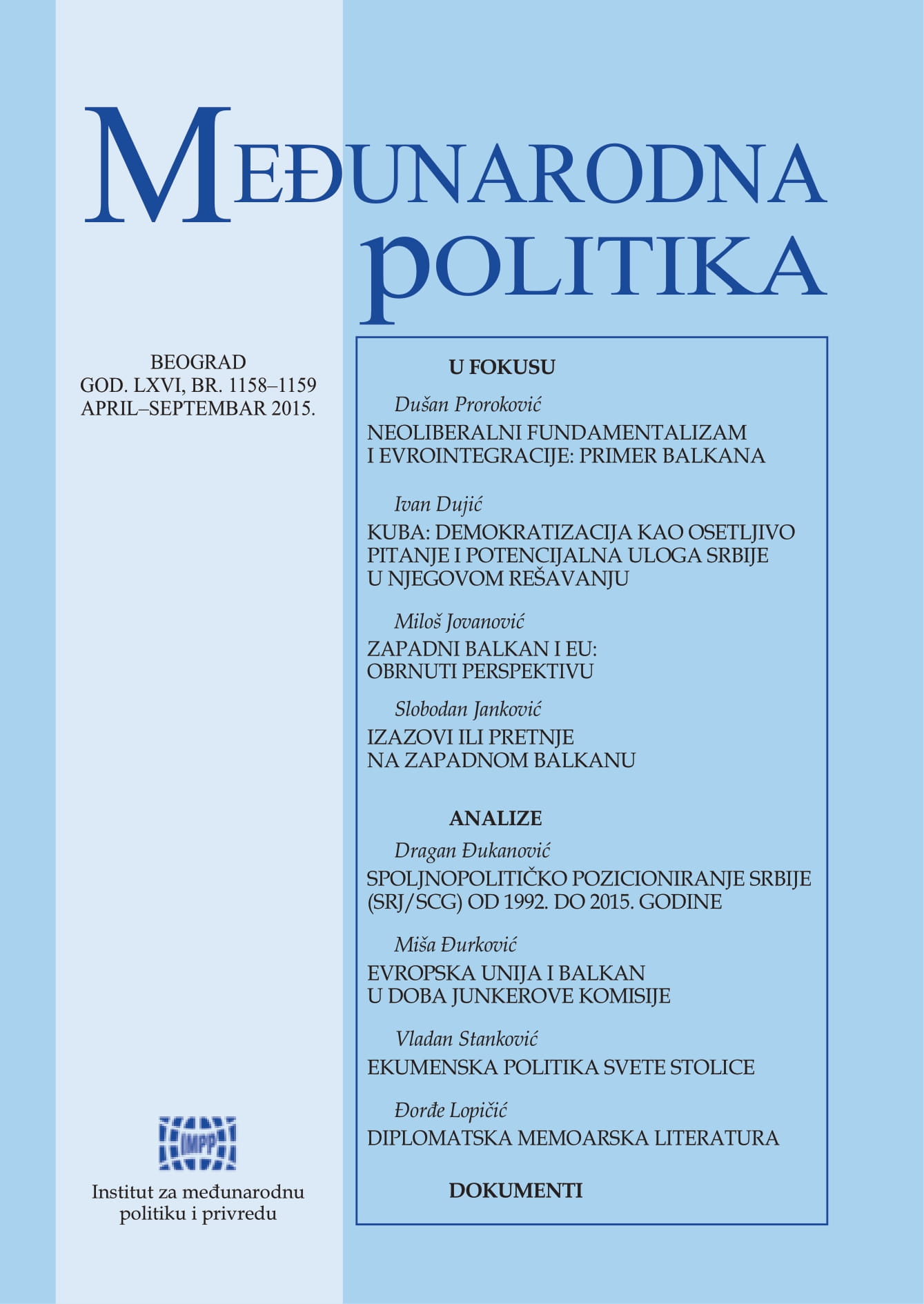Ekumenska politika Svete stolice
Ecumenical Policy of Holy See
Author(s): Vladan P. StankovićSubject(s): Christian Theology and Religion, Theology and Religion, Comparative Studies of Religion, History of Religion
Published by: Институт за међународну политику и привреду
Keywords: ecumenism; the Holy See; (Roman) Catholic Church; Christianity.
Summary/Abstract: Ecumenism means: reconciliation, cooperation, bringing together Christians in the world. Ecumenism is treated as a unity in diversity. That is why the Holy See insists on dialogue of equals. Its established dogmatic minimalism (the common denominator of all Christian theological community: The Bible, Nicene-Constantinopolitan Creed of Faith, the Sacraments of Baptism and the Eucharist) will not be followed by Roman Catholic Church (RCC) and the Holy See because it violates the fullness of its faith. RCC was the last to approach to the ecumenical movement. It would long averse to dialogue that was established by the Protestants and Orthodox in the early twentieth century. It was not until 1960, that RCC first formed a working body for promoting Christian unity. At the Second Vatican Council were basically made three documents that would directly touch on ecumenism. The first document OE, sees in Greek-Catholic, Eastern or Uniate (associated) churches the path of convergence of Catholics and Orthodox. The second document, the decree UR, acknowledges the sacramental power of other churches, and the recognition that they have an identical apostolic heritage. The third declaration, NAE finds common denominators in other religious practices and religions (interreligious dialogue). All that is known (in Shinto and Confucianism), true (Hinduism and Buddhism) and identical (in Islam and Judaism), RCC accepted as divine light. With Muslims it shares identical Abrahams heritage, respect for Jesus and the Virgin Mary, and the Day of Judgment. In Judaism emphasizes the sameness of Abraham’s heritage of the scriptures and the courage of the children of the Chosen people to accept Christ's teachings. In the post-conciliar period comes to rapprochement with the Orthodox, mutual recognition of episcopal honors, and removing the anathema. In the decades that followed RCC organized: people, working bodies and documents that are committed to ecumenical rapprochement. Since then, the zeal to rapprochement became intense, and also the obligation of the church. The most intensive dialogue will be between Catholics and Orthodox, and Catholics and Protestants (especially with the Anglican Church, then with the Lutheran Church). The Catholic Church insists on interreligious dialogue with other nonChristian communities and religious practices.
Journal: Међународнa пoлитика
- Issue Year: 66/2015
- Issue No: 1159-1158
- Page Range: 164-176
- Page Count: 13
- Language: Serbian

